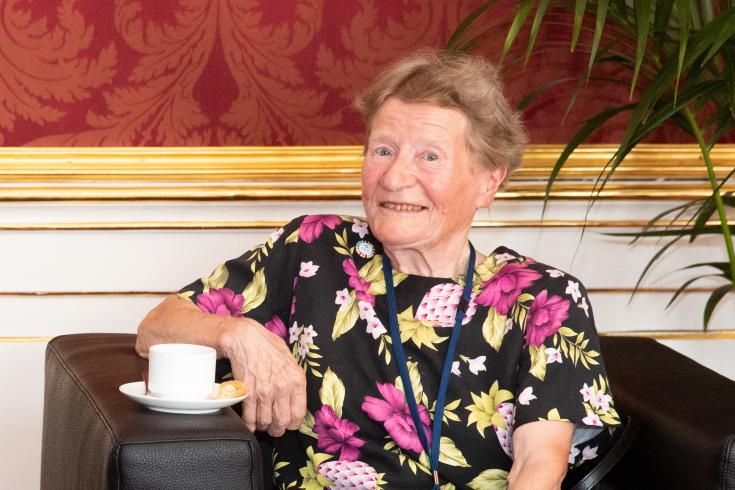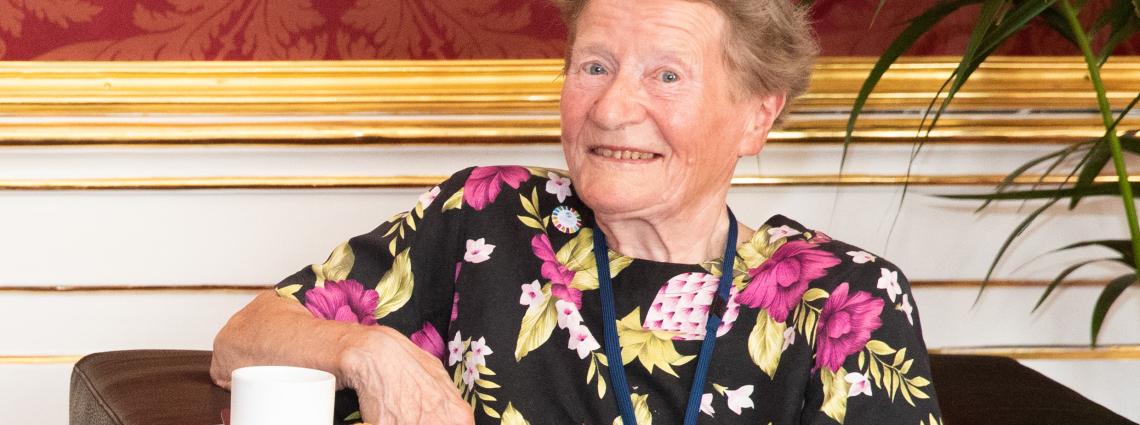“Unsung hero” tends CTBT station deep in Finnish forest
Isolated deep amid the dense forest and endless lakes of central Finland, Primary Seismic Station PS17 is ready round the clock to capture signs that a nuclear test may have taken place, anywhere in the world.
Every day this silent, unstaffed listening post, part of the International Monitoring System (IMS) of the Comprehensive Nuclear-Test-Ban Treaty (CTBT), gets a visitor. Sometimes walking her dog, sometimes alone, 81-year-old caretaker Sanni Mäkelä-Vesa comes to look after the site. “My nearest neighbour is the seismic station,” she says. “I check that everything’s intact, that none of the windows is broken.
In winter I brush the snow off the steps.” A diminutive woman with sparkling blue eyes, Mäkelä-Vesa is part of the global network of operators and their staff who ensure that data continues to flow from some 300 seismic, hydroacoustic, infrasound and radionuclide monitoring stations to the Comprehensive Nuclear-Test-Ban Treaty Organization (CTBTO) in Vienna. “These people are the backbone of nuclear test monitoring and detection.
Without them, there would simply be no IMS,” CTBTO Executive Secretary Lassina Zerbo said in June at the opening session of the CTBT: Science and Technology 2019 (SnT2019) conference. In the audience at Vienna’s historic Hofburg palace was Mäkelä-Vesa, who attended SnT2019 as a special guest. “Sanni is far too modest to admit how important she is,” Zerbo continued, paying tribute to the “unsung heroes” of the IMS. “But if the signal from our otherwise unmanned stations cuts out, it is her and people like her who take direct action to bring it back online.” Station PS17 at Sysmä is one of 44 primary seismic stations that are already established as part of the CTBT’s verification regime, monitoring constantly 24 hours a day, seven days a week, for underground nuclear explosions.
Data from its seismic array are relayed via a secured satellite network to the CTBTO’s International Data Centre in Vienna. When completed, the IMS will include a total of 50 primary seismic stations, along with 120 auxiliary seismic stations that can provide information on request. CTBT Member States can use the data to distinguish between a nuclear explosion, possibly thousands of kilometres away, and the numerous natural and man-made seismic events, such as earthquakes and mining explosions, that occur every day.
PS17 lies nearly 200 km north-east of Helsinki where the station operator, the Institute of Seismology at the University of Helsinki, is based. The isolation is deliberate. Modern seismometers are incredibly sensitive, but the signals they pick up can be distorted by background vibrations known as “seismic noise”, generated by anything from vehicle traffic and industrial activity to wind and ocean waves.
To minimise this problem, seismic stations are usually built in remote areas. Mäkelä-Vesa, who lives some 30 km from the nearest town, took over the caretaker role in 2011 after the death of her husband. “Previously my husband used to take care – we used to go together every day,” she said.
She said she had learned a lot from her trip to Vienna, where she offered Zerbo a personal present: a pair of thick, hand-knitted socks in a traditional blue and white Finnish design. And she had a strong message for other women: “I would definitely encourage women in the field of science to cooperate with each other, to support each other and show solidarity.”

81-year-old Sanni Mäkelä-Vesa attended the Science and Technology Conference (SnT2019) at the Hofburg Palace in Vienna, Austria.
22 Jul 2019
